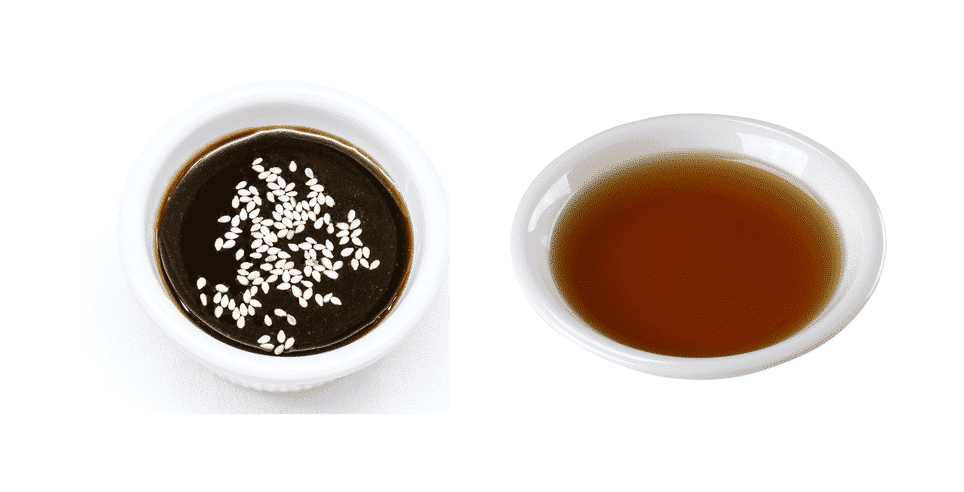
Sauces are essential when it comes to cooking a well-flavoured meal. More than the core ingredients and technique, it is the correct quantity of flavour enhancing sauces that make your food stand out.
There are a variety of sauces being used; the popular ones include Fish and Hoisin sauce. The Mediterranean and the Asian cuisine are very generous when it comes to flavour. Both Fish and Hoisin Sauce are famous among these and various other cuisines.
A lot of people confuse Fish sauce with Hoisin sauce. Although the two are very different when it comes to taste. Here’s everything you need to know about these sauces.
Hoisin vs Fish Sauce
Hoisin Sauce
Traditionally, hoisin sauce is used in the Cantonese cuisine, which comes from the Guangdong province in China. Today, Hoisin sauce is used by chefs all around the world. The old recipe included vinegar, soybeans, fennels, different spices and red chillies. All these ingredients are boiled with water until a thick paste is formed.
Today Hoisin sauce is cooked using multiple variations and recipes that tend to have a few additions. You don’t necessarily have to make your Hoisin sauce. You can get ready-made sauce from any Asian superstore. These sauces are now being prepared on a commercial scale and have a longer shelf life.
Hoisin sauce is an essential ingredient in various recipes due to its sweet and savoury taste. The slightly sweet flavour makes it ideal for sauce dips. Hoisin sauce is also used in curries, soups, and noodles. In addition, it is perfect for marinating meat, especially shellfish.
Unlike fish sauce with traces of fish and other meat, Hoisin sauce is safe for vegan and vegetarian recipes.
Fish Sauce
Like the name says, the fish sauce comes from fermented fish cooked with other ingredients, including meat and spices. The fish are coated with salt and let to try. The salt helps dry the fish moisture while the extra time under the sun gives the microbes enough time to strengthen the fish flavour. Once the fish has been sundried properly, it is cooked using basic spices like salt and a little sugar. Sugar is occasionally added to balance out the flavour. There is a chance you might not find sugar in every recipe.
Fish sauce has a strong flavour, more than the flavour; it is the fish aroma that stands out. Fish sauce is the answer if you are craving the classic umami flavour. The Mediterranean Cuisine is famous for using Fish sauce in most of its recipes. Since the Mediterranean cuisine is among the most flavorful cuisines in the world, the use of fish sauce adds the right flavor.
Fish sauce is used in plates of pasta, soups, noodles, dipping sauce, and Chinese curries. The sweet and savoury flavour adds richness to every meal.
Are the two sauces interchangeable?
Are you also wondering if you can use some Fish sauce instead of Hoisin sauce, or vice versa? Well, the answer is yes. If the recipe you’re cooking includes Fish sauce, you can replace it with Hoisin but remember to adjust the spices accordingly. Similarly, you can replace Hoisin sauce with Fish sauce, just make sure to add a little sugar to the recipe.
Hoisin sauce has a slightly sweet flavour to it. If you’re using another substitute instead of Hoisin sauce, don’t forget to add an extra pinch of sugar to get the exact taste.
Concluding Thoughts
The Hoisin sauce and the Fish sauce are both irreplaceable since these sauces add a rich umami flavour to meals. However, when it comes to sauces, you need to be very careful about the quality and quantity. Always order or buy your sauces from a reliable superstore. Make sure the sauces aren’t expired when you open the seal. Follow the exact recipe and don’t add extra sauce, thinking it might give more flavour. Chances are, you will ruin the authentic taste and aroma by adding too much.
You can’t possibly use Fish sauce if you plan on cooking a vegetarian recipe. In that case, Hoisin Sauce is the ideal substitute. Since Hoisin Sauce has no traces of meat but still manages to add the meaty umami flavour to your meal.